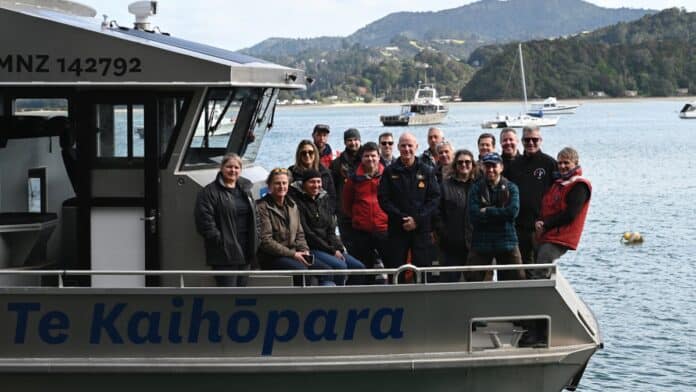A new low-cost floating reflector to aid boat rescues in remote oceans and detect people lost at sea is being developed by University of Auckland scientists in collaboration with the New Zealand Defence Force.
The engineers say the Synthetic Aperture Radar for Search and Rescue (SAR4SaR) device could be a lifesaver in the Pacific and aid countries such as New Zealand keep watch over its vast search and rescue region which covers 30 million square kilometres of water.
New Zealand is responsible for a zone extending from the mid-Tasman Sea, halfway to Chile, and from the South Pole almost up to the Equator. In 2023/24 New Zealand’s Rescue Coordination Centre conducted 489 search and rescue operations.
Finding a raft or small boat in the open ocean is like looking for a needle in a haystack.
Dr Tom Dowling
“Finding a raft or small boat in the open ocean is like looking for a needle in a haystack,” says Dr Tom Dowling, a University of Auckland scientist who is leading the project in conjunction with Defence Science & Technology.
“But we aim to make the needle so shiny that it can’t be missed.”
Developers are designing the device so it is small enough to fit in a small boat – even below the seat of a canoe.
When required, the device is popped open to float on the sea reflecting electromagnetic energy back to commercial satellites passing overhead.
Artificial intelligence
An artificial intelligence tool would scan radar data to detect the call for help.
The aim is to develop a reliable low cost device that requires no batteries or maintenance.
“This innovation could be especially relevant for parts of the Pacific where many people rely on simple boats and lack access to high-end emergency gear,” explained Dr David Galligan, the director of Defence Science and Technology, the Devonport-based scientific arm of the New Zealand Defence Force.
“The ocean is central to the lives of Pacific Island communities; it is an important source of food, and a means of transport,” he says.
Adrift on the open ocean
“But they often go to sea with limited safety and communications equipment. When problems arise, they can find themselves adrift on the open ocean.”
During a week-long experiment at Omaha, the reflectors were put through a series of trials that confirmed their detectability, durability and ease of deployment.
The device’s effectiveness is made possible because of the advent of low-orbiting satellites.
Phase two testing is now complete with the goal to further refine the reflectors before they are evaluated in a future phase three trial.






